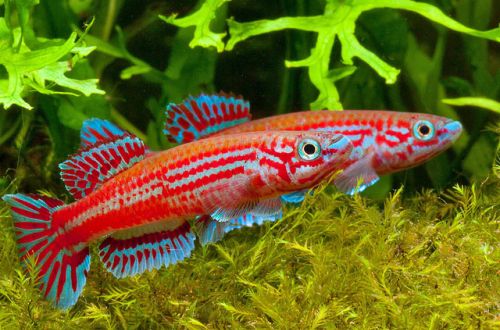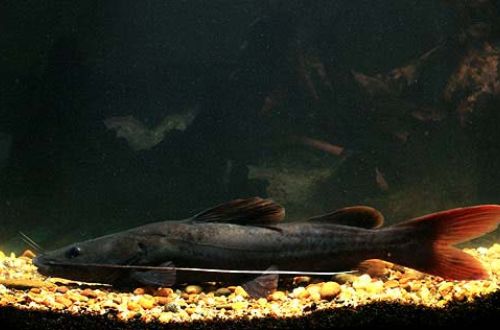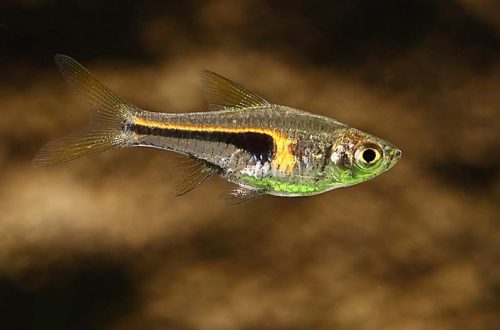
silver shark
The silver shark or Columbian catfish, scientific name Ariopsis seemanni, belongs to the Ariidae family. This type of catfish got its name due to the original appearance, reminiscent of a miniature shark, although by the standards of the aquarium the fish is quite large. The catfish is unique not only in appearance, but also in the sounds it makes, scientists suggest that this is a way of communication between relatives in troubled waters to save the flock, a kind of echolocation like in dolphins, and this type of navigation is more efficient than sight and lateral line . Another feature of the fish is the poisonous rays of the dorsal fin, the poison is not fatal, but painful, quite comparable to a bee sting.
Habitat
The silver shark was first described by explorer Carl Günther in 1864 during an expedition to Central and South America. The catfish is widely distributed in the deltas of the rivers, mainly flowing into the Caribbean Sea, and is found in countries such as Mexico, Guatemala, El Salvador, Nicaragua, Costa Rica, Colombia, Ecuador and Peru. Fish during spawning migrate upstream the rivers, where the fry appear.
Description
Catfish is very reminiscent of a real shark in appearance and mode of movement, only the presence of a mustache clearly indicates that the fish belongs to catfish. Juveniles are silvery gray with a white belly, darker on the back and caudal fin. The adult coloration is fading, but the fish is still eye-catching. The sharp dorsal fin is located close to the head and contains a poisonous spike – protection from predators, the anal fin is quite long with 26–46 rays, the fins are dark with a white border. The fish is large, reaches 35 cm, looks graceful for its size.
Food
In the wild, the Silver Shark preys on small fish, insects, crustaceans, however, it is an omnivorous species, but if you keep the fish on a plant-based diet, it will quickly die. Other non-meat foods should be fed as supplements to the main food. Catfish use their antennae to search for food, they are strewn with sensitive receptors that react to electric fields from moving fish, due to which they are able to detect food even hiding in the ground. In an aquarium, catfish will gladly consume earthworms, mussels, shrimps, octopus or fish strips, as well as any type of sinking industrial feed (granules, tablets, flakes).
Maintenance and care
The content is schooling, therefore, taking into account the size of the fish, the aquarium should be at least 280 liters, the catfish reaches its maximum size in just 2 years. Catfish require free areas for swimming, decoration should be closer to natural habitats – mangroves, for example, you can use snags, woven roots, etc. Plants must have a strong root system and be adapted to brackish water. A substrate of coarse sand or fine, smooth gravel will prevent injury to sensitive antennae.
Fish require a high oxygen content in the water, provide an enhanced aeration system and combined filters that spray air. You should also ensure the movement of water in the aquarium. A sign that a catfish is lacking in current is its tendency to stay close to filters in places where water is thrown out. An aeration system and productive filters usually solve the problem by creating strong water flows.
The water is brackish, hard, about 30% of the total volume should be replaced weekly. Sea salt is used to prepare water, adults need a ratio of 10 gr. Salt per 1 liter of water, for juveniles – 2 gr. For 1 liter.
Be sure to wear gloves to maintain the aquarium to avoid accidental injury from a poisonous spike, serious complications can occur in people with an allergic reaction.
Social behavior
Columbian shark catfish is a schooling species, keeping in a group of at least 3 individuals, one by one becomes shy and restless. Unlike most catfish, it is not a territorial fish. Peaceful behavior towards fish of the same size, smaller neighbors will quickly become the object of hunting.
Breeding / breeding
According to external signs, even experienced specialists find it difficult to distinguish a male from a female, there are no obvious differences. Breeding does not occur in home aquaria, primarily due to the inability to replicate natural conditions. In the wild, catfish mate in brackish water, the male keeps the fertilized eggs in his mouth throughout the entire incubation period, and by the time the fry hatch, he rises upstream the river and releases them already in fresh water, where they live until they grow up.
Diseases
The main causes of disease outbreaks in this species are inadequate conditions of detention, this applies not only to the hydrochemical composition of water, but also to design. Diseases are not uncommon in home aquaria. More information about diseases can be found in the section “Diseases of aquarium fish”.





